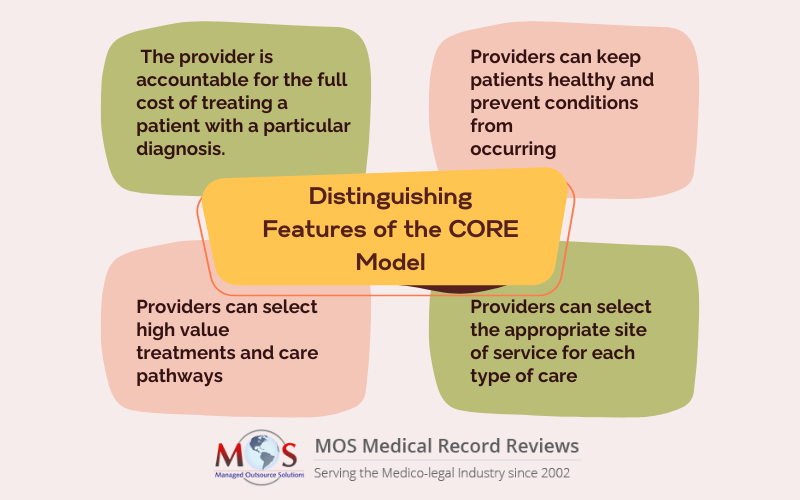Medical claims review is vital in determining whether provider billings are reasonable, accurate and appropriate for the services provided to a patient. Importantly, the services provided have to be medically necessary to receive payment. A major concern that insurers have is providers billing for unnecessary services, which not only increases healthcare costs but also reduces the quality of care provided to patients.
Medical review companies providing medical claims review service to insurers, physicians and law firms are aware of two payment models that are being adopted now – procedure and DRG-based bundled payments that pay one price for all the care related to treating a condition; and the population-based “global” or “capitated’ payments such as accountable care organizations in which providers are paid a fixed amount to cover all of a patient’s healthcare needs for a particular period of time. The concern is that these payment models may involve provision of unnecessary care and thereby increased healthcare costs.
Looking for excellence in medical records review for insurance companies?
Consult with us for a customized solution.
Call (800)-670-2809
We offer 30-50% Cost Savings.
The Promising New Payment Model
Now the CORE Institute (Center for Orthopedic Research and Education), a group of neurologic, musculoskeletal and rehabilitative physicians in Arizona and Michigan that includes spine, orthopedic and pain management physicians and a number of other types of clinicians are introducing a new and middle-ground approach. This model is expected to address a major drawback of bundled payment model, namely, that it doesn’t prevent unnecessary care.
What are the main features of this payment model?
The provider is accountable for the full cost of treating a patient with a particular diagnosis. The provider can decide which particular type of treatment to provide for, or not provide.
The current bundled payment model covers the entire cost of the care related to say, a knee replacement from surgery through physical therapy. The CORE model allows a provider to receive payment if he/she chooses alternative therapy to a knee replacement as for example, medication injections and/or physical therapy. This model is relatively advantageous to the global payments model as well, with regard to medical conditions or sets of associated medical conditions that can be easily treated on their own because the provider is financially accountable only for the types of diagnoses that it can reasonably influence.
The present CORE model is accountable for the entire diagnosis-based spend annually. Suppose an unnecessary MRI is ordered by a physician; it is ultimately paid for by CORE. It also pays for the hospitalization, and all the hospital / facility care provided as well as all of the medications related to the patient’s musculoskeletal conditions during the year, if the physician performs a knee replacement on the above-mentioned patient. CORE covers all the care, medications and testing for a patient who falls and is seen in an urgent care center with a diagnosis of shoulder pain.
Advantages of the CORE model
Here is a look at the major advantages offered by the new CORE Model of medical billing.
- Providers win by keeping their patients healthy and preventing conditions from occurring. The CORE Institute has a bone health program that helps reduce the possibility of patients developing fragility fractures. This program also helps manage osteopenic patients before their elective surgery with a view to improve outcomes and reduce complications. They have their own clinic for postoperative blood clots to keep patients out of the ER, and thereby reduce costs, overtreatment and the need for additional surgery. They ensure that appropriate care is provided to each patient via standardized, evidence-based, and proven care models.
- Providers can select high value treatments and care pathways under the CORE model. They decide when non-surgical treatments are /are not likely be more successful than surgery. To consider an example, a physician accountable for all care for a specific type of bone cancer would have an incentive to be alert regarding whether surgery, radiation, chemotherapy and so on would ensure the highest-value treatment and care for a particular patient in a particular situation.
- Providers can select the appropriate site of service for each type of care. In bundled payment models, the patient care usually starts with admission into a hospital participating in a care program. In a medical-condition-based bundle such as the CORE model, care can be delivered at the best site whether it is a different hospital or type of facility.
To ensure that this model is successful across providers and patients, CORE has heavily invested in, developed and implemented a set of tools and management systems. These include patient management tools, automated clinician evaluation tools that review provider compliance with evidence-based practice, applications that track complications, and functional and patient-reported-outcomes scoring tools. Since a standardized data set is available to the group now, they have also launched predictive analytic tools that help decide the best course of treatment and care for patients. Providers who want to succeed with medical-condition based bundles must however, have access to these types of technologies.
MOS Medical Record Reviews Ensures Value-added Medical Chart Reviewfor payers!
Ask us for a Free Trial. Contact us at (800)-670-2809
Significant Statistics of the CORE Model
The CORE Institute has shown better outcomes at costs up to 30% below others in the region. During the period 2012 – 2016, they saw a 50% reduction in PMPM costs with certain at-risk populations they managed.
These savings were made possible by reducing readmissions of up to 50% compared to competitors, reduced use of post-discharge facilities such as nursing homes and other care settings, reduced wasteful utilization for non-beneficial interventions, and transparent partnerships with superior quality, progressive hospital systems.
CORE is a physician group largely comprising orthopedic surgeons, and therefore the institute may not be able to take on accountability for the total medical expense of patients across all conditions. However, a high value solution can be provided for patients with the collaboration of such high-value networks of different medical specialties by insurers, large provider groups or hospital systems.
The CORE Payment Model represents a transformative approach to healthcare delivery and reimbursement, with the potential to significantly reduce unnecessary medical services while improving patient outcomes and lowering costs. By incentivizing value-based care, resource optimization, and patient engagement, the CORE model offers a promising pathway towards a more efficient, sustainable, and patient-centered healthcare system. Through collaborative efforts and a commitment to continuous improvement, the CORE Institute aims to lead the charge in advancing healthcare efficiency and quality through innovative payment models like CORE.
Avoid payment for medically unnecessary treatment with our medical chart review services!
Contact us at 1-800-670-2809





